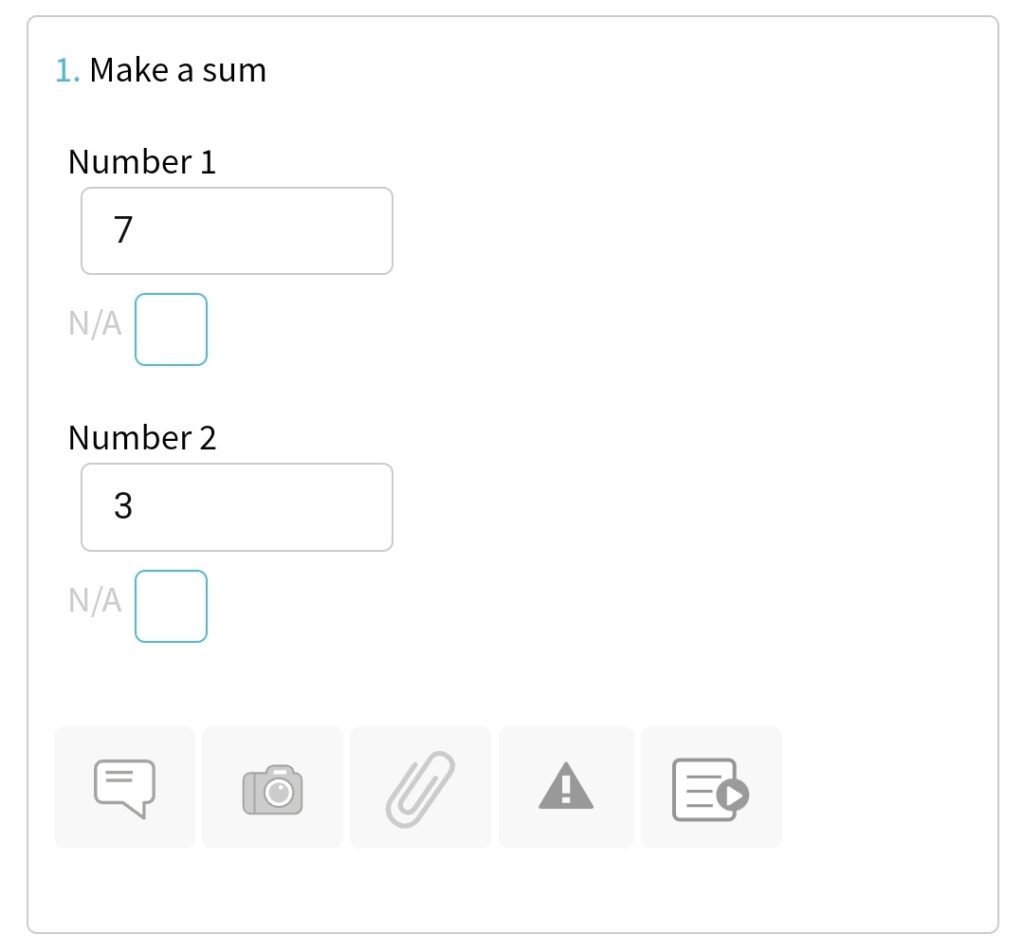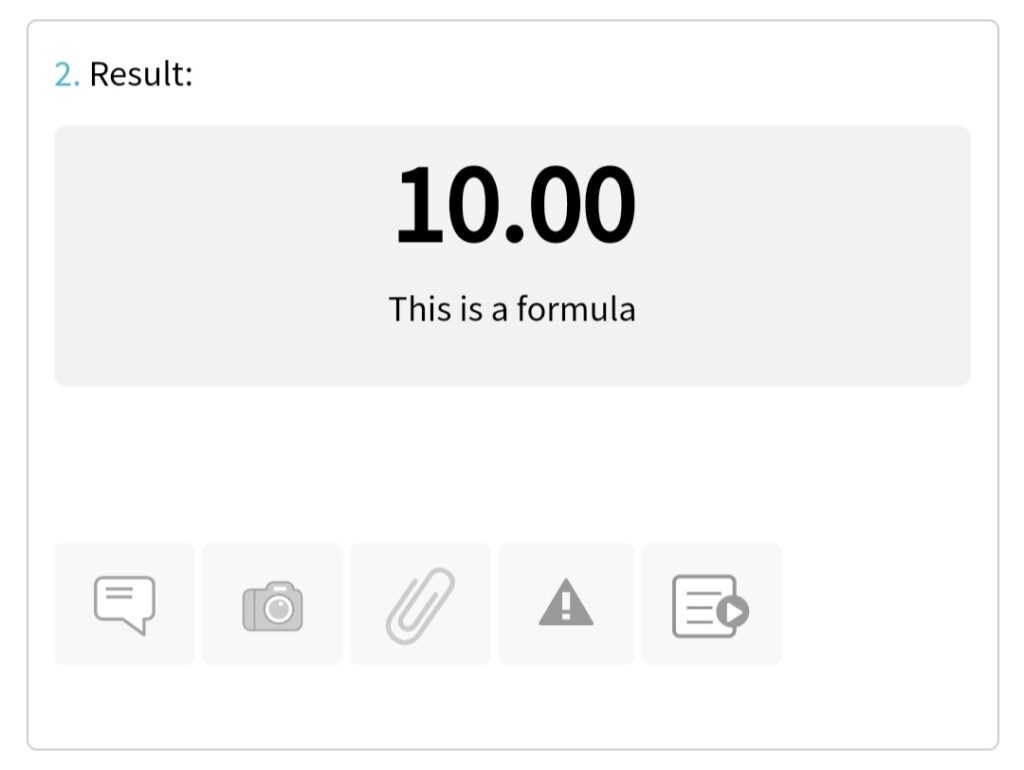Enrich the data displayed in your checklists by taking advantage of the metadata produced by the platform.
Iristrace allows you to add the metadata of the main Iristrace entities in questions, question descriptions and even answers, in order to visualize and exploit the data automatically.
You can access the list of metadata when configuring the question in the link indicated in the image.

The metadata must be written with the nomenclature indicated in the list so that the data referenced in the question texts appear correctly.

1. Types of metadata #
There are several types of metadata, each of which meets the specific requirements of the task at hand. Here is a list of all possible possible metadata and and a short description of your result.
- Current date: [current_date]
- Current time: [current_time]
- Current date and time: [current_datetime]
- Link to any site, in this example to Google: [f:www .google.com]
- User’s full name: [user_full_name]
- User’s time zone: [user_timezone]
- Department ID: [department_id]
- Name of the department: [department_name]
- Department code: [department_code]
- Image of the department: [department_image]
- Description of the apartment: [department_description]
- Address of the department: [department_address]
- Trade name: [department_comercial_name]
- Department region: [department_region]
- Template ID: [template_id]
- Template name: [template_name]
- Template version: [template_version]
- Date of creation of the template: [template_creation_date]
- User who created the template: [template_creation_user]
- Date of the last version of the template: [template_last_version_date]
- Latest version user: [template_last_version_user]
- Template Description: [template_description]
- Template image: [template_image]
- Id checklist: [checklist_id]
- Name of the checklist: [checklist_name]
- Checklist scoring: [checklist_score]
- Last user of the checklist: [checklist_last_user]
- Checklist start date: [checklist_start_date]
- Date of completed checklist: [checklist_complete_date]
- No. of Incidents: [checklist_num_issues]
- Date of creation of the checklist: [checklist_create_at]
- User who created the checklist: [checklist_create_by]
- Date of modification of the checklist: [checklist_update_at]
- Person who modified the checklist: [checklist_update_by]
- Audit code: [checklist_num_audit]
- Observation of the checklist audit: [checklist_description_audit]
- Displays the answer to another question. X: number of the category / Y: number of the question / Z number of the answer: [q .x.y.z]
- Displays the answer to another question. X: number of the question / Y: number of the answer: [q .x.y]
2. Where metadata can be used #
All of the above metadata can be used in different places. At this point we will see all the available sites where metadata can be used.
2.1 Checkbox #

2.2 Single response #

2.3 Multiple response #

2.4 Multiple selection (toggle) #

2.5 Numeric #

2.6 Text #

2.7 Slider #

2.8 Drawing #

2.9 Signature #

2.10 Smileys #

2.11 Info #

2.12 Formula #

2.13 Details #
You can put metadata in the details of each question mentioned in this article and in What types of questions can be configured .
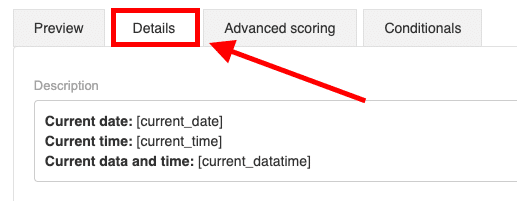
2.13.1 Example #
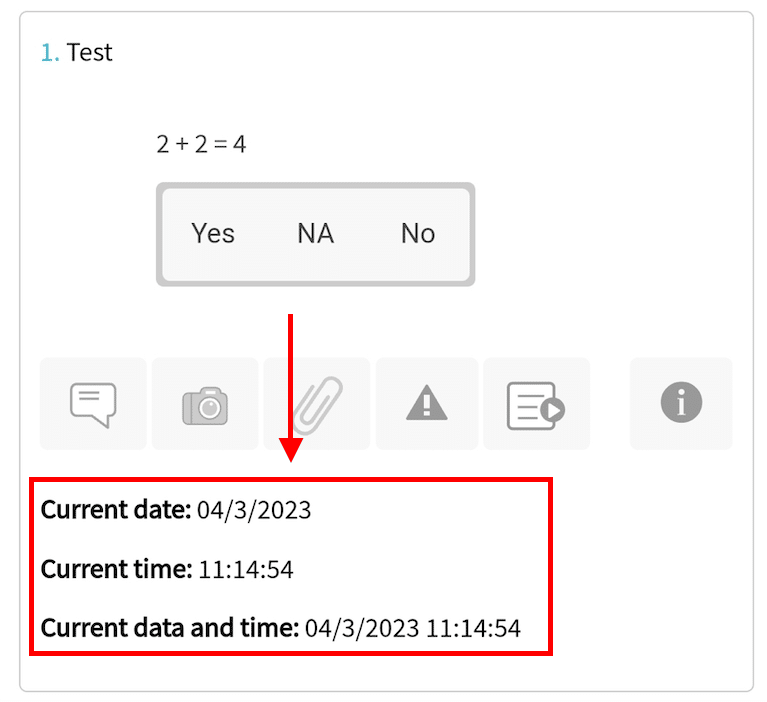
2.14 Reports #
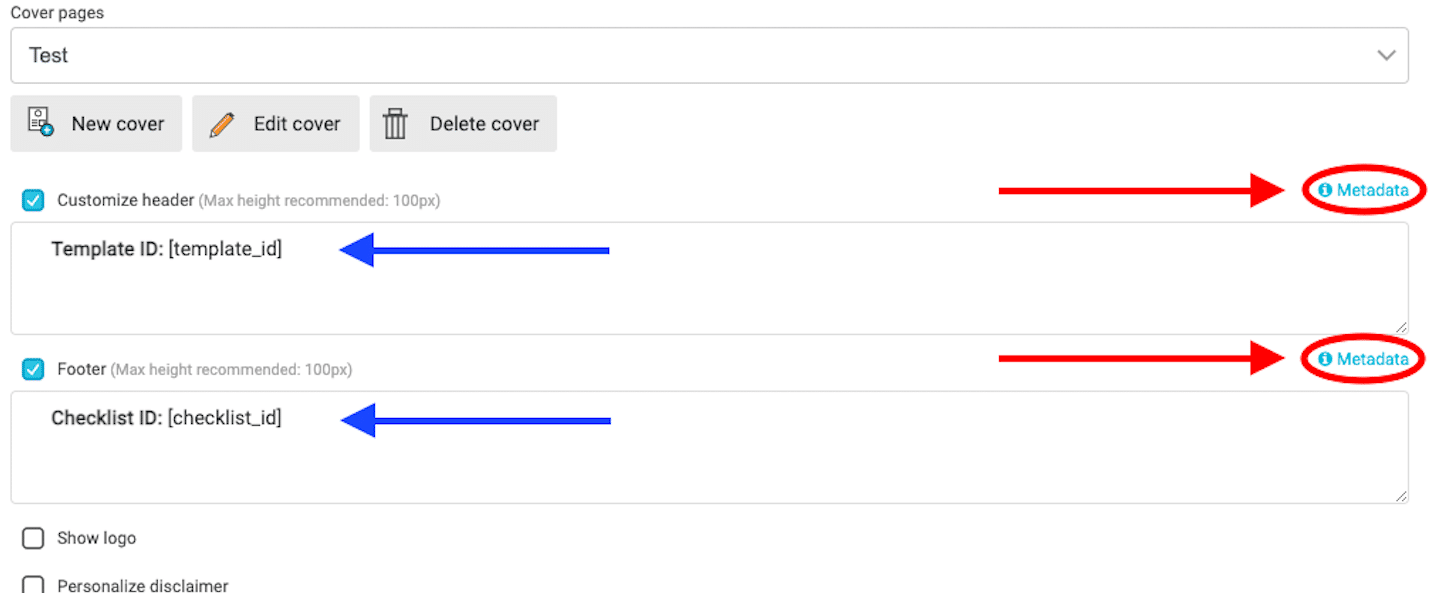
2.14.1 Result #
Custom template with custom header and footer using metadata.
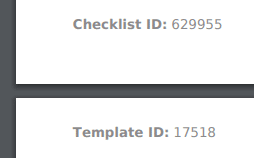
3. How metadata is used #
To use the metadata mentioned above you need to know several things:
- What type of metadata do you want to use
- Where it will be used
Once everything is clear, here is an example of use:
